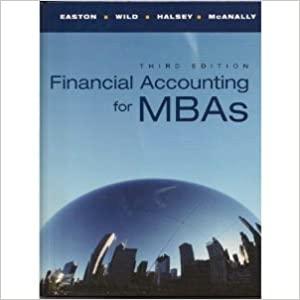able manufacturing irect materials and nents relate to vari- 2. Variable Manufacturing Cost Variances LO4, 5, 6 Companies incur a variety of variable mani costs, including those related to direct mate direct labor. The following statements relate to able manufacturing cost variances. a. Computing a price variance involves multiply the difference in the actual quantity used and the standard quantity allowed by the actual price per unit. b. Usage, or efficiency, variances are appropriately calculated for direct materials, but not for direct labor. C. Traditional variance analysis is less informative than variance analysis conducted in an environment in which a company uses activity-based costing. d. The price variance for direct materials is calcu- lated as the difference between the actual price and the standard price, times the actual volume purchased. e. Potential causes for an unfavorable direct labor variance include the use of higher paid workers than budgeted and unexpected increases in Wage rates due to union negotiations. Required Indicate whether each of the preceding state is true or false. aing statements Overhead Variances L07,8 A company must understand overhead variances just as it does those related to direct labor and direct material. The following statements relate to over- head variances. a. In the calculation of the variable overhead vari- ance, the standard number of hours allowed for actual production multiplied by the variable predetermined overhead rate (i.e., SH X SVR) is the amount of actual variable overhead. b. The variable overhead efficiency variance indicates how efficiently a company used the base chosen to apply overhead to the cost of a product. C. Fixed overhead variances consist of a volume variance and a spending variance. d. The fixed overhead volume variance can be in- terpreted as favorable or unfavorable just as any other variance can. e. The fixed overhead volume variance is the differ- ence between the budgeted fixed overhead and the applied fixed overhead. Required Indicate whether each of the preceding statements is true or false. 4. Using Variance Analysis LO, Review the following incomplete statements about the use of variance analysis. a. Variance analysis has a number of when it is used in a modern manufacturing environment. b. The focus of traditional variance analysis is rather than on customer service, delivery time, and other nonfinancial measures. C. Management by exception suggests that it is _necessary to investigate all variances. is a likely result of using ideal standards when managers continually face unfavorable variances. e. In order to interpret variances, the must be determined. d. Required Complete the preceding incomplete statements with the correct term from the following list of terms provided (note that not all terms will be used): solutely, advantages, competition, cost control, Packs, not, product quality, resentment, under- drawbacks, not, prod lying cause. 3. Overhead Variances L07,8 A company must understand overhead variances just! as it does those related to direct labor and direct material. The following statements relate to over- head variances. a. In the calculation of the variable overhead vari- ance, the standard number of hours allowed for actual production multiplied by the variable predetermined overhead rate (i.e., SH X SVR) is the amount of actual variable overhead. b. The variable overhead efficiency variance indicates how efficiently a company used the base chosen to apply overhead to the cost of a product. c. Fixed overhead variances consist of a volume variance and a spending variance. d. The fixed overhead volume variance can be in- terpreted as favorable or unfavorable just as any other variance can. e. The fixed overhead volume variance is the differ- ence between the budgeted fixed overhead and the applied fixed overhead. Required Late whether each of the preceding statements is true or false










